Contents
The floors in your home receive constant physical abuse from foot traffic, furniture legs, and, in some cases, pets. Without a good protective layer from polyurethane, they will wear quickly and appear damaged. Water-based poly is often a better option than oil-based alternatives due to cost, drying time, and ease of application.
However, not all water-based polyurethanes offer the same protection and convenience. I put together these reviews and a comprehensive buyer’s guide to help you find the best option to protect your floors.
Best Water-Based Polyurethanes for Floors – My Top Picks
BuildEazy.com may earn a commission if you purchase a product through one of our links.
Bona offers a wide range of protective finishes and cleaning solutions for all types of floors.
This polyurethane is thin and extremely easy to apply. It lays down very smoothly, and I had no issues with bubbles, swirls, or other inconsistencies. I’d recommend this for homeowners who are concerned that their skill level is inadequate to refinish floors, as it’s effortless to use accurately.
This polyurethane provides excellent physical protection to hardwood. I’m confident that this will stand up to very heavy foot traffic, pets, and dining room chairs being shuffled across it. I’d trust this in any room in my home. It’s easy to clean once it has cured, and it seems to create an impenetrable barrier over the flooring.
For a visual representation of the kind of protection this poly offers, check out this video:
It dries very rapidly, which makes your job easier and less time-consuming. You only have to wait a few hours in between coats. I recommend holding off on re-applying for 24 hours, but you could safely place two coats in a single day if you were in a rush.
I suggest sanding between coats with a 220-grit pole sander, as this will leave you with a beautiful finish, and waiting 24-48 hours before introducing any kind of foot traffic or furniture. This will help the poly cure nicely and keep the surface smooth and beautiful.
It uses oxygen in the air as the curing agent, so I suggest applying it on a warm or humid day when oxygen levels are higher.
This sealer is VOC (volatile organic compound) compliant, which means it’s relatively safe to use. I strongly recommend you take proper safety precautions, wear a respirator, and keep the room you’re working in well-ventilated during the application process. It has a very low odor, so it’s unlikely to make your entire house smell, as some other products do.
It comes in a 1-gallon jug, and each gallon will cover around 600 square feet, depending on the type of wood you’re applying it to and the humidity.
Minwax 710330000 Water-Based Oil-Modified Polyurethane
Minwax is a well-known and highly-trusted brand in the woodworking industry. They make a variety of products for coloring and protecting wood.
This polyurethane is water-based but modified with oil. The result is a slightly thicker solution than many other options. A high viscosity often makes the application more challenging, but this poly strikes a good balance between thickness and comfort.
This is one of the fastest-drying floor polyurethanes I’ve ever used. It was dry to the touch within just two hours and ready for sanding before a second coat. The fast drying time is convenient for reducing the overall time you spend refinishing your floor. You can comfortably apply three coats and finish your project in a single day.
However, while there were no bubbles in the polyurethane, you should pay very close attention to drips or streaks and fix them immediately. Otherwise, you’ll end up with a dried imperfection that will need to be sanded out and retouched. Thankfully, mistakes are easily cleaned up with warm water, as long as you catch them before they dry.
This poly adds an excellent protective layer that I’m sure will resist quite a bit of physical wear and tear. I would recommend this for use in any room with heavy foot traffic or where pets could otherwise damage the floor.
It has a low-VOC content, which makes it safer to use than many other options. I still strongly recommend that you take care not to inhale any fumes while you work. However, the odor that comes off of this poly is very minimal, so you can avoid smelling up your entire house.
It comes in different finishes depending on your preference, including gloss, satin, and semi-gloss.
It’s available in 1-gallon cans, which are relatively expensive. However, this polyurethane has excellent coverage, so each gallon can treat about 500 square feet with one coat, or around 170 square feet with three coats.
General Finishes High-Performance Water-Based Topcoat
General Finishes has been manufacturing high-quality protective solutions for wood products for nearly 100 years, and they specialize in water-based varnishes.
This polyurethane is thin and very straightforward to apply. It settles nicely once laid onto wood floors, and I had no issues with bubbles or other imperfections. A smooth finish was easy to produce with some light sanding between coats with a 220-grit pole sander. I was very pleased with how professional this poly appeared once it cured.
Check out this video to see how the application and sanding process should look:
It creates a thick, hard layer over your floor and offers some of the best physical protection I’ve seen in a water-based polyurethane. I would have no reservations about using this in heavily trafficked areas of my own home, and I’m confident it will hold up for quite a long time.
It takes about two hours to dry, so the time you’ll have to wait in between coats is very minimal. You can easily apply three coats with sanding in between in a single day, which means less time your floor is out of commission. I recommend letting it cure for 24 hours between the last coat and reintroducing it to physical wear.
This polyurethane will tint your floor slightly yellow. The minor color change isn’t an issue for most natural wood floors or dark floors, but I don’t recommend placing this over white surfaces, as the discoloration will be pronounced.
It’s available in flat, gloss, satin, and semi-gloss finishes, so you can customize the appearance based on your preference.
This poly contains volatile organic compounds, so the fumes are unsafe to inhale. You’ll need to take proper safety precautions, always wear a respirator, and maintain adequate ventilation while you work.
It comes in 1-pint, 1-quart, 1-gallon, and 5-gallon pails, so you can choose from multiple sizes depending on how large your floor is. It’s relatively expensive, but a single gallon can supply one coat for around 600 square feet.
Bona Traffic HD Commercial Satin
Bona Traffic is made by one of the most notable brands in the floor treatment industry, and their formula is made explicitly for high-traffic areas.
This polyurethane is very thin, which makes it straightforward to apply. It smoothes out nicely over the work surface, and I had no issues with globs or streaks while I worked. Some tiny bubbles formed on the surface, but they went away on their own before the product dried, which still resulted in a flat, smooth finish.
It’s designed to resist high traffic, and it holds up that promise and offers excellent physical protection to wood surfaces. I would be confident using this in my home’s busiest areas and wouldn’t be too concerned with scuffing, scratching, or other physical damage.
It dries in about three hours, at which point you can safely sand and apply an additional coat. The rapid drying time makes it easy to finish your flooring project in a single day. I recommend waiting about 24 hours after the final coat before it’s exposed to furniture or foot traffic, just to be sure that it cures fully.
It can cause a bit of a milky appearance if you’ve previously faux-aged your wood with oxalic acid. Sanding the treated wood thoroughly before applying this polyurethane should eliminate any problems.
This comes in 1-gallon jugs, and it is reasonably expensive. However, I feel that it’s worth the extra money and provides excellent value. Each gallon will cover around 375 square feet.
It comes with a hardener that you’ll have to add before beginning the application. This is a minor step that barely takes up any time. However, you should plan out how much poly you plan to use, as the hardener can cause the solution to cure in storage. You can see the result of pot hardening in this video.
This poly has a very low VOC content. While you should still wear safety equipment, it is less dangerous than many other options, and it has little odor.
RUST-OLEUM FBA 230031 Varathane Waterborne Diamond Floor Finish
RUST-OLEUM has been a respected and dependable brand for protective paint, and their products are used across several different industries.
This water-based polyurethane is thin, which makes it a breeze to apply. It spreads beautifully on your work surface, leaving behind no bubbles, streaks, or globs. It’s relatively mess-free, so it’s suitable for beginners.
It provides a robust layer of physical protection for your wood floors. The hard surface will resist scratches, scuffs, and other physical abuse from heavy foot traffic, furniture legs, and more. I would even be comfortable applying this in rooms pets will frequent.
It dries in about two hours, so you can comfortably put down multiple coats with sanding in between in a single day. Provided you have a powerful pole sander that can smooth each layer quickly, you could start and finish a room with three or four protective coats within around ten hours. I recommend you let it cure for 24 hours before exposing it to physical wear.
This only comes in a gloss finish, but it’s suitable for most flooring applications. With proper sanding and drying time between coats, I was able to get a beautiful, shiny finish that looked professionally done.
The container says that this is a low-odor poly, but it has a more pungent odor than all of the low-VOC polyurethanes I’ve used. It’s not nearly as strong as the odor you’d get with an oil-based poly, but the smell takes a few days to dissipate entirely. You should be prepared to have to air out your home while it cures.
This product does contain VOCs, so you’ll have to wear a respirator when applying and be careful not to let anyone else in your home inhale the fumes. Thankfully, the quick drying time makes that relatively easy.
This comes in gallon cans, and each container can cover about 350 square feet. It’s very affordable and provides excellent value for the money.
Basic Coatings STREETSHOE Waterbased Wood Floor Finish
Basic Coatings provides high-performance floor sealers and cleaners for individual and professional use.
This polyurethane is very easy to apply, even if you’re a beginner. It goes on smoothly and seems to settle nicely into place as you use it. I had no problems with imperfections, so I feel that a true first-timer would have very few mistakes they would need to fix. The solution doesn’t bubble up, streak, or glob easily.
If you do make a mistake or experience drips, it’s best to let it dry and sand down the error. The poly dries very quickly and begins to cure almost immediately after you put it down, so you have little time to correct any issues. Imperfections are easy to sand, but the added work to correct drips or other mistakes can be time-consuming. Luckily, this poly isn’t prone to problems.
It offers excellent physical protection, so it’s suitable for highly traveled areas of your home. It will resist scuffing, scratching, and cracking, so you can use it confidently.
It’s a bit inconvenient to time recoats because there is a maximum of four hours that you should wait due to the rapid curing. This is great if you plan to get your floor started and finished in a day or two, but it’s not very helpful if you have limited time and want to work in pieces. You can expose the final coat to foot traffic within 24 hours, so, again, it’s great if you want to get the job done as quickly as possible.
It’s available in satin, semi-gloss, and gloss, but I recommend you choose the finish that’s a level less glossy than you want. Even the satin is somewhat shiny, and I’d consider it semi-gloss, so keep that in mind when choosing your finish.
This has a low-VOC formula, making it relatively safe to use. However, you should still ventilate the room properly and wear a respirator while your work.
It comes in 1-gallon jugs that are somewhat pricey, but each gallon covers an impressive 450-650 square feet, providing good coverage for the money.
Deft Interior Exterior Water-Based Polyurethane Finish
Deft provides a wide array of floor treatments with a specialization in fast-drying polyurethane and lacquer.
This water-based poly is a bit thicker than other solutions, but it’s still effortless to spread evenly and get a clean, polished look on your floors. I had no issues with bubbling or streaking, so I’d recommend it for anyone from beginners to those experienced with finishing floors.
It adds a very durable protective layer that will undoubtedly protect wood floors from damage. It’s hard enough to resist scratching and scuffing, and I’d be confident in its ability to stand up to abuse from high traffic and furniture legs.
It takes just two hours of drying before you can apply an additional coat, which means you can lay down three or four layers with sanding in between in a single day. This minimizes the time you’ll have to set aside for your flooring project. After the last layer, I recommend letting it cure for about 48 hours before introducing furniture, appliances, or foot traffic.
This poly does add a bit of a yellow tinge to the surfaces to which you apply it. It’s not noticeable at all on darker woods, and it’s not much of an issue on lighter wood species. However, it will cause a bit of discoloration, which is especially noticeable on white surfaces.
Although Deft makes this product in accordance with VOC regulations, it does contain volatile organic compounds. You’ll need to take proper safety measures when using this sealer, which should include the use of a respirator at all times.
It only comes in a gloss finish and 1-quart containers. You won’t have your choice of sheen, and you can’t buy in large quantities to save money. Although each can will cover around 500 square feet, it’s costly, and you’ll likely need multiple quarts for your project.
Buyer’s Guide
Make sure you pay close attention to the below factors when purchasing, as these will help decide which is best for your purposes.
Water-Based Vs. Oil-Based Polyurethanes
Water-based polyurethanes are becoming more and more common for finishing floors as they get better at protecting against physical wear. Generally speaking, water-based poly is less protective and less durable than oil-based options. However, they have gotten much better and can now provide a hard, damage-resistant surface suitable for heavy traffic areas.
Water-based poly is more convenient to use because it’s thinner, which makes it more straightforward to apply. It tends to settle after it’s painted on, leading to fewer imperfections like bubbles, streaks, and dense areas.
It’s also generally preferred by homeowners because it dries significantly faster. Oil-based poly often takes multiple days to dry, so you’ll need to wait 24-48 hours between coats and four entire days before it can support traffic and furniture.
Water-based poly often dries enough to sand and recoat in just 2 hours, and most products cure fully within a day. This means you can begin and finish your floor refinishing project within a single day, and your floor will be ready for regular use within a day or two.
Oil-based polyurethane tends to have more volatile organic compounds in it, which not only makes it more dangerous to inhale but also creates a significantly more pungent odor in your home while you apply it and wait for it to dry. Oil-based solutions take longer to cure, which means the scent will persist for several days and sometimes around a week.
Luster or Sheen
Many water-based polyurethanes have finishing agents in them that provide a sheen or glossy appearance once they have cured. Some come in different finishing options, which often include matte, satin, semi-gloss, gloss, and high-gloss.
I personally use a matte or satin finish on nearly every project, but floors are a bit different. A nice luster on a hardwood floor can bring a lot of natural beauty to your home and make the space feel lighter.
Check out this video to get an idea of what the different poly finishes look like:
Tint
Most polyurethanes are meant to be clear coats that don’t add color to your wood or change the appearance at all. However, some add a tint to the surface, often yellowish in color. This usually isn’t an issue on bare wood, although some homeowners may not want a lighter colored wood to appear yellowed.
However, tinting can be a significant problem on white or light-colored floors. Even the slightest yellow coloration can make your floors look dirty. There are plenty of water-based polyurethanes that are truly clear no matter what surface you apply them to, so I recommend choosing one based on your floor color and whether or not you want to avoid a tint.
Durability
Polyurethane will wear down over time with heavy traffic, and there is no product that will last forever. However, some options are more durable than others and will last for a more extended time without the need for touch-ups or reapplication.
Most will last for several years with regular use. However, if you plan to place yours on floors that are heavily traveled or will be exposed to scratching and scuffing from pets or furniture, I recommend you select a poly that is formulated to resist heavy wear. A good option would be the Bona Mega Wood Floor Finish Stain.
Curing Time
Polyurethane takes time to cure, and water-based solutions generally need to remain undisturbed for 24-48 hours to allow for the hardest, most protective surface possible. Different solutions can cure faster or slower depending on the curing agents and the ratio of solvent dissolved in them.
I recommend buying a poly that will cure in the most convenient time for your home. If you’re finishing the floor in a spare bedroom where you don’t need ongoing and regular access, for example, choosing a poly that cures in 48 hours isn’t an issue.
However, a living room or kitchen is much more essential to everyday living, so you may want to choose one that cures rapidly and can take foot traffic within 12-24 hours.
Coverage & Cost
Water-based polyurethane often comes in 1-gallon cans or jugs with wildly different prices, but the maximum coverage can also vary quite a bit.
I recommend you measure the square footage of the area you plan to finish, multiply by however many coats you intend to apply – I recommend three or four – and then choose a poly that is affordable enough to cover that number.
The cost is often indicative of the protective capabilities of the poly you’re considering. Those that create a tough, durable layer will usually cost more, especially based on the square footage it can cover. However, you may end up saving in the long run if you don’t need to reapply as often.
Ease of Application
Water-based poly is generally very straightforward to apply because it is thinner than oil-based options. Not all water-based solutions are equally as thin, though.
If you have little experience finishing floors, I strongly recommend a poly that leaves few imperfections, like the Bona Mega Wood Floor Finish Stain. Provided you don’t accidentally drip during the application process, you’ll have very few corrections to make and less sanding to do once the poly cures.
Check out this video for tips on making application as easy as possible:
VOC Content
All polyurethanes contain volatile organic compounds (VOCs) that are dangerous to inhale. However, some products include fewer per gallon and are considered “low-VOC” based on VOC regulations. Low-VOC poly is generally safer to use.
However, protective gear and adequate ventilation are still requirements when applying any polyurethane. I recommend investing in a reliable respirator for the safest application possible.
Odor
All polyurethane has an odor, but one of the biggest reasons homeowners choose water-based poly is that it is far less pungent than oil-based solutions. Water-based polyurethanes can vary from little smell to somewhat offensive odor.
The smell is often linked to the VOC content, so if you want to limit how much or how long your home smells like polyurethane, choose a low-VOC option or one that is known to have little odor.
Pot Life
“Pot life” refers to the time a poly can remain in a resealed container and still remain useful. Most water-based polyurethanes have a pot life of a year or so, but some have hardening agents that you need to mix in before use. The options with this hardening additive, like the Bona Traffic HD Commercial Satin, will harden in a short amount of time once you have mixed it.
Is Water-Borne Polyurethane Durable?
While oil-based poly is generally more durable and protective, water-borne polyurethane advancements have made it suitable for use in heavily trafficked portions of flooring.
Provided you choose one that is formulated to resist heavy wear and tear, water-borne poly will give you excellent protection, and the advantages in curing time, safety, and odor often far outweigh the minimal durability you’ll lose.
Frequently Asked Questions
How Long Does Water-Based Polyurethane Last On Floors?
Among the most crucial factors to think about is the durability of the polyurethane product because it will determine how long it will last. Water-based polyurethane should last several years and will look its best during this time.
High-traffic areas will certainly wear down quicker than other areas that hardly ever see activity.
As an example, the corridor or kitchen will see a lot more traffic than a spare bedroom or occasional study. It may be better to use a better quality formula in these areas.
The polyurethane of any type that is put on floors and exposed to lots of sunshine from windows will wear down a lot faster than darker areas. The sun breaks down the material, requiring refinishing more often.
Do You Have To Sand Between Coats Of Water-Based Polyurethane On Floors?
Yes. Polyurethane must be sanded in between layers. You should use high-quality sandpaper to ensure that you get rid of all the particles that have accumulated when it was wet.
It produces a much smoother finish and helps it adhere to each coat.
Due to the fact that you require a minimum of 3 coats of water-based polyurethane to obtain a smoother and professional coating, you must stand in between layers.
Sanding is not needed between layers for adherence, particularly if each coat dries out in less than 6 hours. It’s advisable to recoat polyurethane on the exact same day.
Regardless of all the products available nowadays, nothing beats how effective it is to stand in between polyurethane coatings.
Yes, it takes time and a little cash, but it’s certainly worth it for the results, In addition, it’s the only method that is able to correct any small errors in the application and save you from starting the whole job again.
Recommendation: When to Use Water-Based Poly
Water-based polyurethane is excellent in most flooring applications, but I particularly recommend it over oil-based options when you’re refinishing maple or other light wood or when you want a perfectly natural look.
Oil-based polyurethane almost always tinges the surface yellow, which can leave an unnatural or undesirable appearance. Some water-based poly will create a slight tint, but there are plenty of options that will dry perfectly clear and leave your wood looking natural, light, and beautiful.
Can You Sleep In House After Water-Based Polyurethane?
It is possible to stay and sleep in your house after you’ve coated your floor with water-based polyurethane because unlike oil, it dries rapidly. It takes about 2 to 3 hrs for it to dry completely.
As a result, you are able to recoat your floor the same day. Yet the primary reason why it is safe is that it contains fewer toxins than its oil-based counterpart, and the smell dissipates quickly.
Is Water-Based Or Oil-Based Polyurethane Better For Floors?
This really comes down to personal choice as both water and oil-based polyurethane are effective but let’s look at some key differences.
Color
oColor is one of the biggest differences between the two. Oil will provide your floor with lovely deep, rich orangy-red tones and greatly enhance the floor’s natural color.
Water-based, however, has little color but can develop into yellow/orange over time.
If you particularly like the color of your floor, then use the water-based option to retain it. It’s useful to bear in mind that if you want to use water-based but would also like to change the color, it’s possible to varnish the floor before applying the polyurethane.
Texture
Oil-based polyurethane is much thicker and will create a thick layer as a defence for your wood floors. It is a wonderful choice for durability and high traffic locations. It’s recommended to apply three coats of an oil-based poly.
Water-based coatings will be thinner but harder than oil-based. If you select water-based coating and are wondering about high traffic areas, it’s suggested to add 4 coats overall.
Drying Times
Water-based poly dries out quicker than oil. You can walk on the floor where the Water-base has been applied in about 4 hrs, conversely, the oil base is around 10 – 12 hrs.
These drying times are approximate and can be influenced by moisture as well as temperature in the home. It’s best to wait the longest time possible to avoid ruing the job.
What can we conclude? Oil-based is useful for the longevity it offers and is superior in terms of thickness. It’s been around for a while, so is trusted by tradesmen to do an effective job.
However, water-based is a great alternative if you or your family members are particularly sensitive to aromas or aren’t able to vacate the house during the process of applying the polyurethane.
Odor
Oil-based polyurethane has a unique and incredibly strong smell. It can still be apparent for a fair while after application.
As mentioned earlier, It’s important for people to be out of the house during application and for a few days afterwards. However, some people don’t mind the odor and can tolerate it.
Water-based polyurethane has a much lower volatile organic compound than the oil formula, so produces much less of a smell. This is probably the better option if you will be remaining in the house throughout the process.
Hope you enjoyed this short guide to deciding what nest floor covering to use.
Wrapping Up: What is the Best Water-Based Polyurethane for Floors?
Water-based polyurethane provides an excellent protective layer for your wood floors, but I’m sure you can see by now that not all options offer the same durability. Some are suitable for high traffic areas, while others will fade more quickly under stress. The options also vary in curing time and ease of application, and these factors can make choosing one challenging.
No poly will be best for all situations, but my overall favorite is the Bona Mega Wood Floor Finish Stain. It’s effortless to apply, leaves a smooth, professional-looking finish, and can stand up to plenty of physical abuse in high-traffic areas of your home.

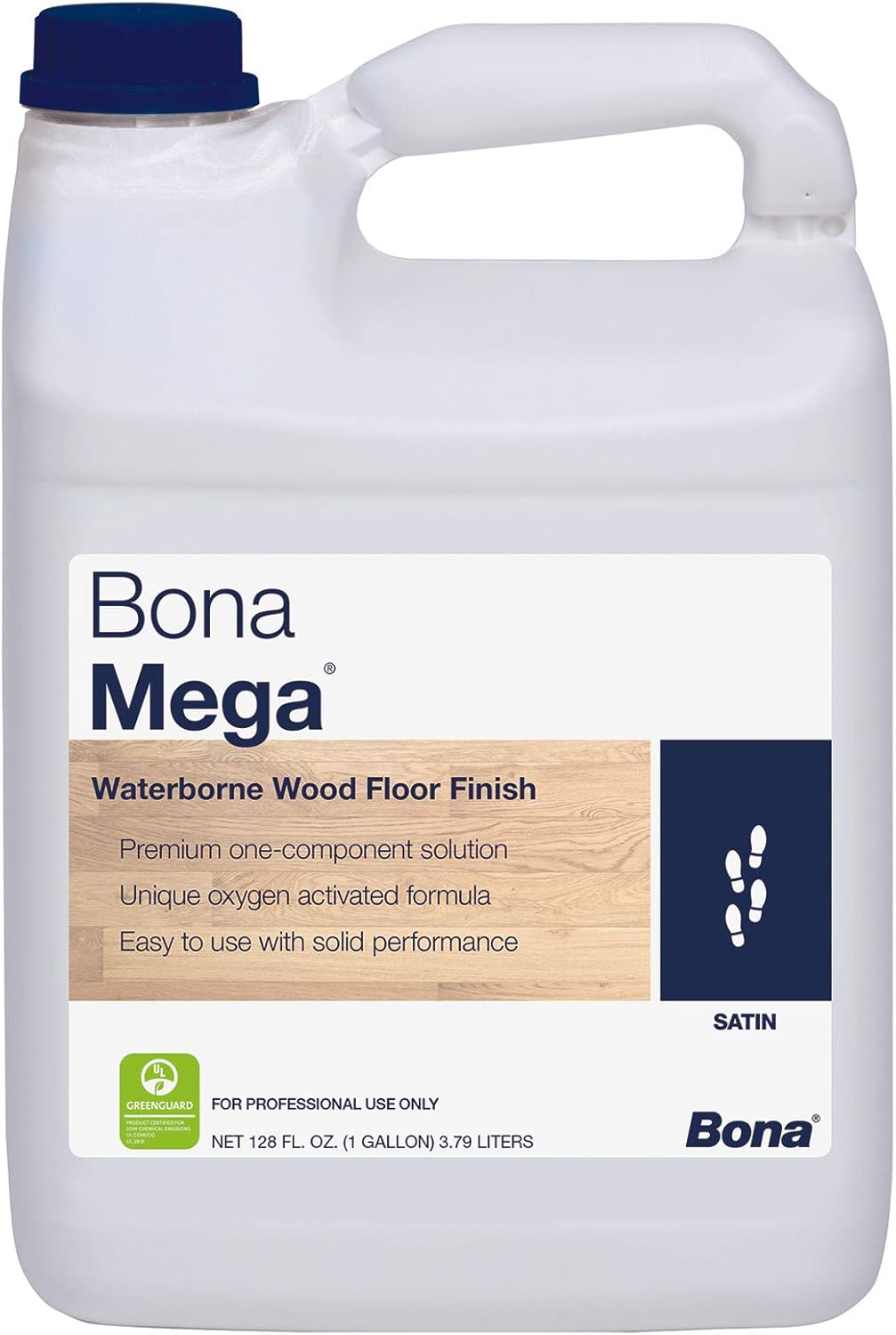



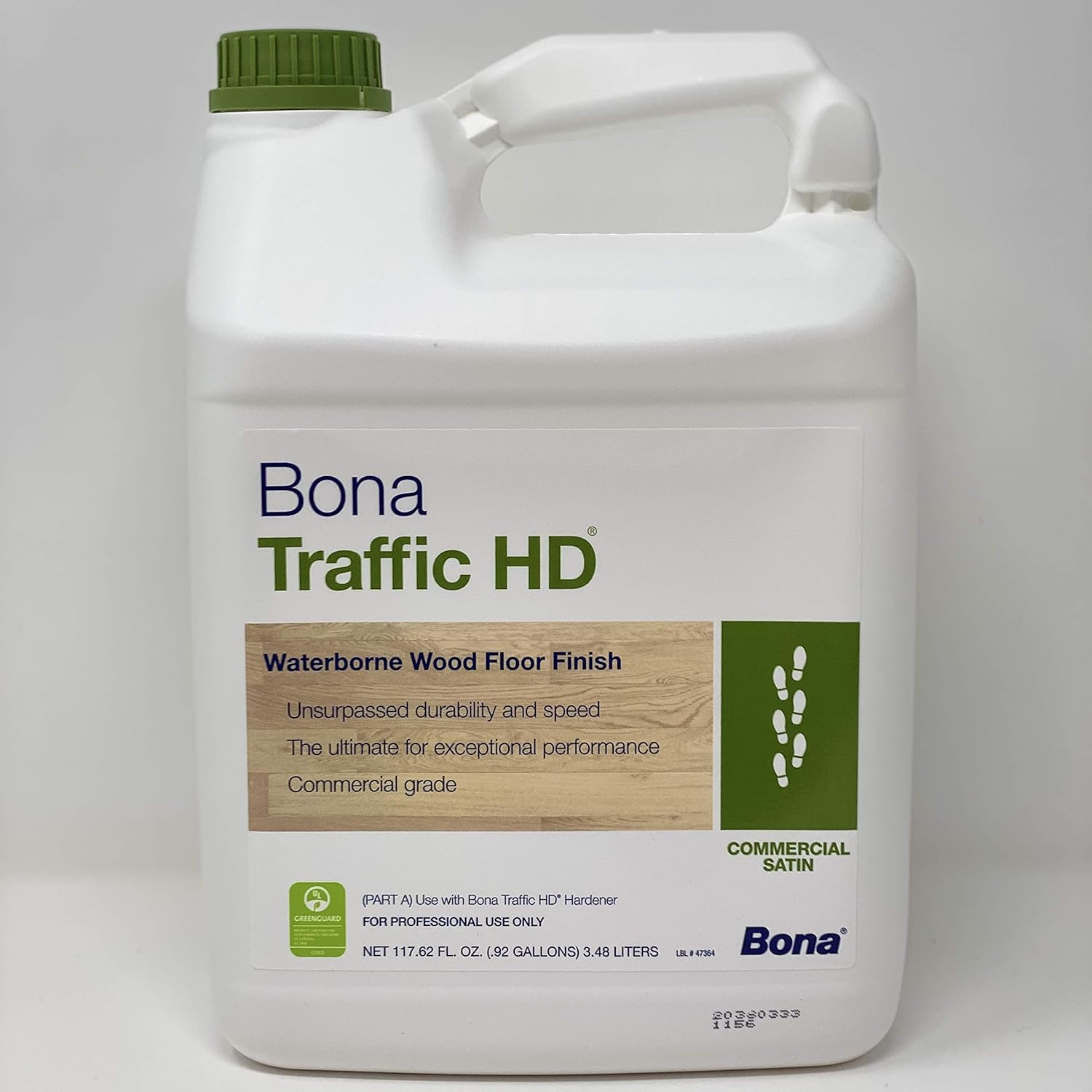

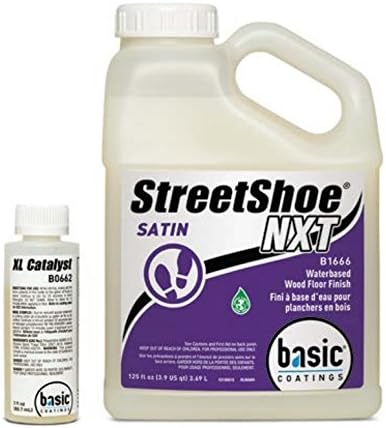
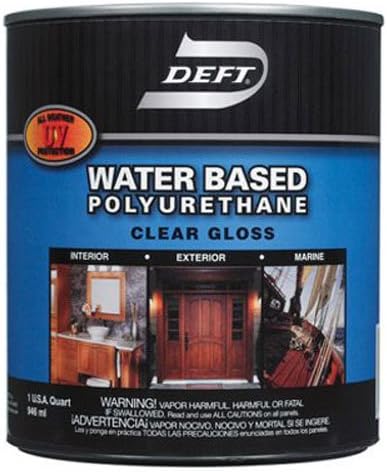


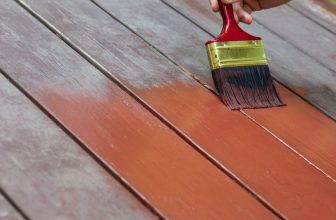

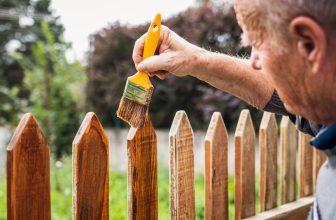
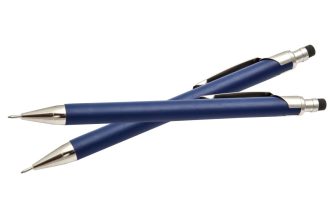
Sir:
At sea level, the atmospheric oxygen concentration is 20.7%. Neither humidity nor temperature affect this proportion.
I enjoy your articles.